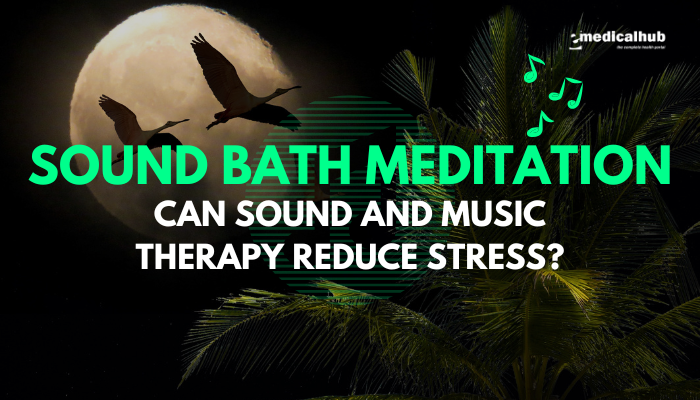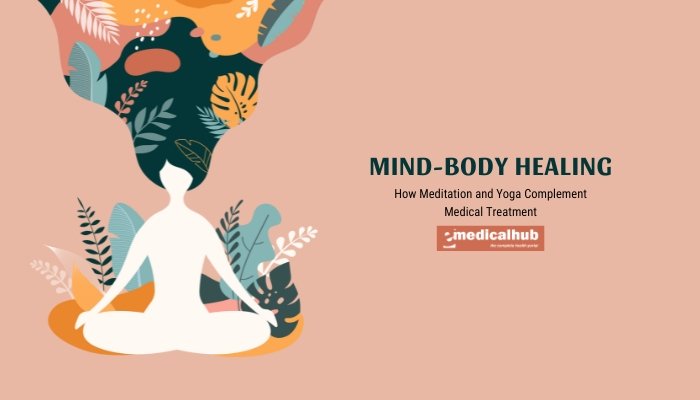Introduction
In our modern, fast-paced world, stress is a common challenge affecting both mental and physical well-being. As people increasingly seek non-invasive and holistic ways to manage stress, sound bath meditation has emerged as a popular practice. Combining ambient sounds, musical instruments, and guided meditation, sound baths aim to immerse participants in a wave of calming frequencies that promote relaxation and stress relief.
Proponents claim that the vibrations from sound baths can soothe the mind, reduce anxiety, and even improve sleep quality. But how exactly does sound therapy work? Is there scientific evidence to support its benefits, or is it simply another wellness trend? This article explores the origins, mechanisms, and potential benefits of sound bath meditation, while also discussing its limitations and practical applications as a stress reduction tool.
Disclaimer: This article is for educational purposes only and does not substitute for professional medical advice. If you have severe stress, anxiety, or other health concerns, please consult a qualified healthcare provider before starting any new therapy.
Understanding Sound Bath Meditation
What Is a Sound Bath?
A sound bath is a meditative practice in which participants immerse themselves in sounds produced by various instruments—such as singing bowls, gongs, chimes, tuning forks, and drums. These instruments emit resonant frequencies and harmonics that fill the room, encouraging relaxation and a deep meditative state.
- Immersive Experience: Participants typically lie down or sit comfortably while the sound waves wash over them.
- Passive Engagement: Unlike active meditation, sound baths require little effort beyond allowing oneself to absorb the vibrations.
- Group or Solo Practice: Sound baths can be conducted in group settings or experienced individually using at-home devices.
Historical and Cultural Background
Sound has long been recognized for its therapeutic properties:
- Ancient Traditions: Cultures across the world, from Tibetan monks to Native American healers, have used sound and music in healing rituals.
- Spiritual Practices: In various religious ceremonies, chanting, drumming, and the use of bells or gongs are believed to harmonize the body and mind.
- Modern Revival: In recent years, a renewed interest in holistic therapies has brought sound bath meditation to mainstream wellness centers and online platforms.
Key Principles of Sound Therapy
Sound therapy is based on the concept that specific sound frequencies can impact the body’s energy systems and promote healing:
- Resonance and Vibration: Sound waves create vibrations that can influence cellular activity and encourage relaxation.
- Brainwave Entrainment: The rhythmic patterns in sound may help synchronize brainwaves, shifting the mind from a state of high alert (beta waves) to a more relaxed state (alpha and theta waves).
- Emotional Release: Certain sounds can evoke emotional responses, helping to release pent-up stress and promote a sense of inner calm.
Mechanisms of Action: How Sound Bath Meditation Works
Neurophysiological Effects
When you experience a sound bath, several neurophysiological processes occur:
- Brainwave Modulation: Studies suggest that exposure to rhythmic sounds can induce changes in brainwave patterns, encouraging relaxation and even deep meditative states.
- Endorphin Release: The calming effect of sound can stimulate the release of endorphins, the body’s natural “feel-good” chemicals.
- Activation of the Parasympathetic Nervous System: The soothing vibrations help shift the body from a stress-dominant sympathetic state to a relaxation-inducing parasympathetic state.
Emotional and Psychological Benefits
The psychological impact of sound bath meditation is multifaceted:
- Reduction in Anxiety and Stress: Immersive sound can lower cortisol levels and help reduce the perception of stress.
- Enhanced Mood and Well-Being: Positive auditory stimulation may improve mood and decrease symptoms of anxiety and depression.
- Mindfulness and Presence: The practice encourages participants to focus on the present moment, reducing rumination and fostering a sense of inner peace.
Physical Responses
The physical benefits of sound baths extend beyond relaxation:
- Improved Circulation: The vibrations may stimulate blood flow, aiding in muscle relaxation and recovery.
- Pain Modulation: By influencing the nervous system, sound therapy may help reduce the perception of pain.
- Enhanced Sleep Quality: Regular sessions have been associated with better sleep, likely due to a combination of stress reduction and improved relaxation.
Scientific Evidence on Sound Bath Meditation
Research on Sound and Meditation
Scientific studies on sound therapy have provided promising, though still emerging, evidence:
- Brainwave Studies: Research using EEG has shown that exposure to harmonious sounds can induce alpha and theta brainwave patterns associated with relaxation and meditation.
- Stress Reduction: Several studies have observed reductions in cortisol levels and improvements in self-reported stress and anxiety after sessions of sound meditation.
- Pain Management: Preliminary research suggests that sound therapy may influence pain perception, potentially serving as an adjunct treatment for chronic pain conditions.
Evidence Specific to Sound Baths
While direct studies on “sound baths” per se are limited, related research provides insights:
- Clinical Trials: Some controlled studies have reported improvements in mood and reductions in anxiety following sessions that involve sound therapy techniques similar to those used in sound baths.
- Meta-Analyses: Reviews of music and sound therapy studies indicate overall benefits for emotional and physical well-being, though more rigorous research is needed to isolate the effects of sound baths specifically.
- Limitations: Variability in study design, small sample sizes, and the subjective nature of stress and mood assessments contribute to the mixed evidence.
Placebo and Expectancy Effects
The therapeutic environment and the ritual of a sound bath may also contribute to its effectiveness:
- Placebo Response: The belief in the healing power of sound can enhance the perceived benefits through a placebo effect.
- Holistic Experience: The combination of a peaceful setting, mindful focus, and soothing sounds can create an overall experience of relaxation that amplifies any direct physiological effects.
Benefits of Sound Bath Meditation for Stress Relief
Reduction in Anxiety and Stress
- Cortisol Reduction: By promoting relaxation and altering brainwave patterns, sound baths can help lower cortisol levels, reducing stress.
- Emotional Regulation: The immersive experience can help shift negative thought patterns, leading to decreased anxiety and enhanced mood.
- Enhanced Resilience: Regular practice may improve the body’s ability to cope with daily stressors, contributing to overall emotional stability.
Improvement in Sleep Quality
- Relaxation Before Bed: Sound baths can serve as an effective wind-down ritual, preparing the mind and body for sleep.
- Better Sleep Patterns: By reducing anxiety and promoting a meditative state, sound therapy may help regulate sleep cycles and improve sleep quality.
- Reduced Insomnia Symptoms: Anecdotal and preliminary research suggests that incorporating sound baths into a bedtime routine can alleviate insomnia in some individuals.
Cognitive and Mental Clarity
- Improved Focus: Meditation, enhanced by sound, has been shown to improve concentration and cognitive performance.
- Mindfulness: The practice encourages being present, which can reduce overthinking and mental clutter.
- Enhanced Memory and Learning: Some studies suggest that regular meditation practices are associated with improved memory retention and overall brain function.
Physical Relaxation and Pain Relief
- Muscle Relaxation: The gentle vibrations of sound therapy can help relax tense muscles, reducing physical discomfort.
- Enhanced Circulation: Increased blood flow may help in the recovery of muscles and the reduction of chronic pain, serving as a complementary approach to traditional pain management therapies.
- Joint Relief: For some, improved circulation and relaxation contribute to decreased joint stiffness and pain.
How to Incorporate Sound Bath Meditation into Your Routine
Creating a Conducive Environment
- Quiet Space: Find a quiet, comfortable space free from distractions.
- Comfortable Seating or Lying Position: Use a yoga mat, cushion, or comfortable chair.
- Lighting: Soft, dim lighting or candles can enhance the meditative ambiance.
Using a Sound Bath Setup
- Professional Sound Bath Sessions: Many wellness centers and spas offer guided sound bath sessions. These sessions are led by experienced practitioners using a variety of instruments.
- At-Home Devices: LED panels, speakers, or specialized apps can simulate sound bath experiences at home. Consider investing in a good quality sound system or exploring virtual sound bath sessions available online.
- Essential Oils and Aromatherapy: Complement the auditory experience with calming scents like lavender or chamomile to deepen relaxation.
Combining with Other Mind-Body Practices
- Meditation: Begin your session with a brief period of quiet meditation to clear your mind before the sound bath.
- Yoga: Incorporate gentle yoga poses before or after the sound bath to enhance physical relaxation.
- Breathing Exercises: Practice deep, controlled breathing during the session to help maintain focus and reduce stress.
Tips for Beginners
- Short Sessions: Start with 10-15 minute sessions and gradually increase the duration as you become more comfortable.
- Guided Sessions: Use recordings or attend live sessions to help structure your practice.
- Regular Practice: Consistency is key—aim for regular sessions, whether daily or several times a week, to experience long-term benefits.
Potential Risks and Considerations
Safety Concerns
- Hearing Sensitivity: For individuals with sensitive hearing, prolonged exposure to high volumes may cause discomfort. Adjust the volume to a comfortable level.
- Emotional Reactions: Intense meditation and sound immersion can sometimes evoke strong emotional responses. If you feel overwhelmed, take a break or shorten your session.
- Underlying Conditions: Those with severe anxiety or PTSD should approach immersive sound therapy cautiously and consider seeking guidance from a mental health professional.
Limitations of the Evidence
- Subjectivity: The benefits of sound bath meditation are largely subjective and based on individual experiences, which can vary widely.
- Placebo Effect: Some improvements may be attributable to the placebo effect, where the belief in the therapy contributes to perceived benefits.
- Research Gaps: While promising, more rigorous, controlled studies are needed to fully understand the mechanisms and long-term benefits of sound bath meditation.
Real-World Experiences and Case Studies
Case Study: Stress Reduction in a Corporate Setting
A group of employees at a busy tech company participated in weekly sound bath sessions during their lunch breaks. Over a period of eight weeks, participants reported:
- A significant reduction in perceived stress levels.
- Improved concentration and a greater sense of calm during the workday.
- Enhanced overall mood and increased productivity.
Case Study: Improved Sleep Quality
An individual struggling with insomnia incorporated sound bath meditation into their nightly routine. After consistently practicing for six weeks, the person experienced:
- Shorter sleep onset latency (falling asleep faster).
- Fewer awakenings during the night.
- Improved overall sleep quality and increased daytime energy.
Case Study: Pain Management and Relaxation
An amateur athlete used sound bath sessions as part of their recovery regimen. The immersive sound environment helped:
- Reduce muscle tension and post-exercise soreness.
- Enhance overall relaxation, making it easier to recover between training sessions.
- Contribute to a more balanced mental state, reducing anxiety related to performance pressures.
Frequently Asked Questions (FAQ)
- What is a sound bath meditation?
A sound bath meditation is a practice where participants immerse themselves in soothing, resonant sounds produced by instruments such as singing bowls, gongs, and chimes, to promote relaxation and stress relief. - How does sound affect the brain?
Sound influences brainwave patterns, potentially shifting the mind from a state of alertness (beta waves) to relaxation (alpha and theta waves), and can stimulate the release of mood-enhancing neurotransmitters. - How long should a sound bath session last?
Sessions typically last between 10 to 20 minutes, though beginners may start with shorter durations and gradually increase over time. - Can sound bath meditation help with chronic stress?
Many users report that regular sound bath sessions help reduce stress, lower anxiety, and improve overall mood. However, individual experiences vary, and it is best used as part of a broader stress management strategy. - Is there scientific evidence supporting sound bath meditation?
While research on sound therapy is still emerging, studies indicate that exposure to harmonious sounds can promote relaxation, reduce stress markers like cortisol, and improve mood. More rigorous research is needed to establish definitive long-term benefits. - Can I practice sound bath meditation at home?
Yes. Many at-home devices and online guided sessions are available, making it accessible to incorporate into your daily routine. - What equipment do I need for a home sound bath?
You can use a quality speaker system or a dedicated LED panel with built-in sound. Alternatively, you can simply play high-quality recordings of sound bath sessions through your home audio system. - Are there any risks associated with sound bath meditation?
Generally, sound bath meditation is safe. Some individuals may experience temporary discomfort if the volume is too high or if the experience evokes strong emotions. Adjust the environment to your comfort level. - Can sound baths improve sleep quality?
Yes, many people report improved sleep when incorporating sound bath meditation into their bedtime routine, likely due to reduced stress and enhanced relaxation. - How often should I engage in sound bath meditation?
For optimal benefits, many practitioners suggest integrating sound bath sessions into your routine 3-5 times per week, though daily practice is also beneficial. - Can sound therapy be combined with other relaxation techniques?
Absolutely. Sound baths work well alongside yoga, meditation, and deep breathing exercises, often enhancing the overall relaxation and stress relief experience. - What if I don’t experience immediate benefits?
Mind-body practices often require consistency over time. If you don’t notice immediate changes, consider making sound bath meditation a regular part of your routine and be patient with the process.
Conclusion
Sound bath meditation offers a unique, immersive way to reduce stress and promote relaxation through the power of sound. By harnessing the therapeutic properties of resonant frequencies and harmonious vibrations, sound baths can shift brainwave patterns, lower cortisol levels, and evoke a deep sense of calm. Whether experienced in a professional setting or practiced at home, many users find that the gentle, meditative quality of sound baths enhances overall well-being, improves sleep quality, and fosters a more mindful state of being.
While scientific evidence is still evolving, existing research and numerous anecdotal reports suggest that sound bath meditation can be a valuable complementary tool in managing stress and promoting mental and physical health. As with any mind-body practice, consistency and personalization are key—integrating sound baths with other healthy lifestyle practices like regular exercise, proper nutrition, and mindfulness techniques can maximize benefits.
If you are considering incorporating sound bath meditation into your routine, start with short sessions in a comfortable environment, adjust settings to suit your preferences, and monitor your progress over time. With careful practice, you may discover that the soothing power of sound provides a natural pathway to reduced stress, improved sleep, and enhanced overall well-being.
References
- Chanda ML, Levitin DJ. The neurochemistry of music. Trends Cogn Sci. 2013;17(4):179-193.
- Thoma MV, La Marca R, Brönnimann R, et al. The effect of music on the human stress response. PLoS One. 2013;8(8):e70156.
- Bernardi L, Porta C, Sleight P. Cardiovascular, cerebrovascular, and respiratory changes induced by different types of music in musicians and non-musicians: the importance of silence. Heart. 2006;92(4):445-452.
- Pelletier CL. The effect of music on decreasing pain: A meta-analysis. J Music Ther. 2004;41(3):192-214.
- Kim Y, et al. Effects of ambient sounds on mood and cognition: A review. J Affect Disord. 2018;235:289-296.
- Gold C, et al. Music therapy for depression. Cochrane Database Syst Rev. 2009;(1):CD004517.
- de Witte M, et al. The impact of music on stress: A systematic review. J Music Ther. 2014;51(1): 15-32.
- Huron D. “Sweet Anticipation: Music and the Psychology of Expectation.” MIT Press; 2006.
- Levitin DJ, Tirovolas A. Current advances in the cognitive neuroscience of music. Ann N Y Acad Sci. 2009;1169: 135-146.
- Blood A, Zatorre RJ. Intensely pleasurable responses to music correlate with activity in brain regions implicated in reward and emotion. Proc Natl Acad Sci U S A. 2001;98(20):11818-11823.
- Koelsch S. Brain correlates of music-evoked emotions. Nat Rev Neurosci. 2014;15(3):170-180.
- U.S. National Institutes of Health. Meditation: In Depth. National Center for Complementary and Integrative Health. Updated 2020.







